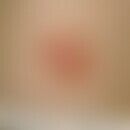Synonym(s)
DefinitionThis section has been translated automatically.
Belladonnae folium, also called deadly nightshade leaves, is a drug prepared from the dried leaves with or without the flowering branch tips, which is used in herbal medicines for various indications. It is used in herbal medicines for various indications.
Quality is specified in the European Pharmacopoeia (Ph. Eur.).
HMPC: Not edited
ESCOP: Not processed
Commission E-Monograph: Spasms and colicky pains of the gastrointestinal tract and biliary tract.
Due to the highly active alkaloids, a classification of belladonna leaves as a herbal traditional medicinal product in the sense of § 39a AMG is prohibited!
IngredientsThis section has been translated automatically.
Belladonna leaves or their root contain between 0.3 and 2 % atropa alkaloids such as atropine (see also atropine sulphate), S-(-)-hyoscyamine and scopolamine, belladonnine, flavonoids and coumarins. The tropane alkaloids are responsible for the toxicity of the plant.
You might also be interested in
EffectsThis section has been translated automatically.
Belladonna leaves or their roots have an antispasmodic effect, especially in the area of the bile ducts and the gastrointestinal tract, accelerate the excitation conduction of the heart and increase its beat frequency. In addition, they suppress nausea and nausea.
Field of application/useThis section has been translated automatically.
According to the guidelines of Commission E for the treatment of nervous heart complaints, spasms and for colicky pain of the bile ducts and gastrointestinal tract.
DosageThis section has been translated automatically.
The mean single dose of Belladonnae pulvis normatus is between 0.05 and 0.1 g; the mean single dose of Belladonnae radix is 0.05 g; the mean single dose of Belladonna extract is 0.01 g.
Undesirable effectsThis section has been translated automatically.
In rare cases, micturition problems, heat build-up, tachycardia, reddening or dryness of the skin, dry mouth, hallucinations, a decrease in sweat gland secretion and convulsions may occur. In case of poisoning: activated charcoal, physostigmine as antidote (Anticholium®). Dosage: Adults Initial 0.04 mg/kg bw (2 mg ) slowly i.v. and 1-4 mg (depending on body
weight) every 20 minutes. If symptoms of intoxication flare up, repeat the full dose. In infants: Initial low dose of 0.5 m g physostigmine salicylate i.v., repeat this dose every 5 minutes up to a total dose of 2 mg.
In agitated states diazepam (10-20 mg i.v.)
ContraindicationThis section has been translated automatically.
In the case of existing mechanical stenoses in the gastrointestinal tract, tachycardic arrhythmias, a prostate adenoma with residual urine formation, acute pulmonary oedema, megacolon or narrow-angle glaucoma, it should not be taken.
InteractionsThis section has been translated automatically.
Tricyclic antidepressants, amantadine and quinidine may increase the anticholinergic effect.
Note(s)This section has been translated automatically.
Drug and discontinued belladonna powder are no longer used therapeutically today. The use of isolated pure extracts is common. Prescriptions and finished medicinal products are only available on prescription.
LiteratureThis section has been translated automatically.
- Berdai MA et al. (2012) Atropa belladonna intoxication: a
- case report. Pan Afr Med J 11:72.
- Glatstein M et al. (2014) Seizures caused by ingestion of Atropa belladonna in a homeopathic medicine in a previously well infant: case report and review of the literature. Am J Ther 21:e196-8.
- Glatstein M et al. (2016) Belladonna Alkaloid Intoxication: The 10-Year Experience of a Large Tertiary Care Pediatric Hospital. Am J Ther 23:e74 77.
- Mazzanti G et al. (1988)A comparative study of behavioral and autonomic effects of atropine and Atropa belladonna. Pharmacol Res Commun 20 Suppl 5:49-53.
- Schilcher H (2016) In: Leitfaden Phytotherapie, Urban & Fischer Verlag Munich, p. 321 f.
- https://arzneipflanzenlexikon.info/tollkirsche.php
- https://www.awl.ch/heilpflanzen/atropa_belladonna/tollkirsche.htm
- Montag A (2023) Plants and skin. Springer-Verlag GmbH. S. 973-974
- https://www.koehler-chemie.de/wp-content/uploads/2021/03/GIFI_Anticholium_04_2020.pdf





